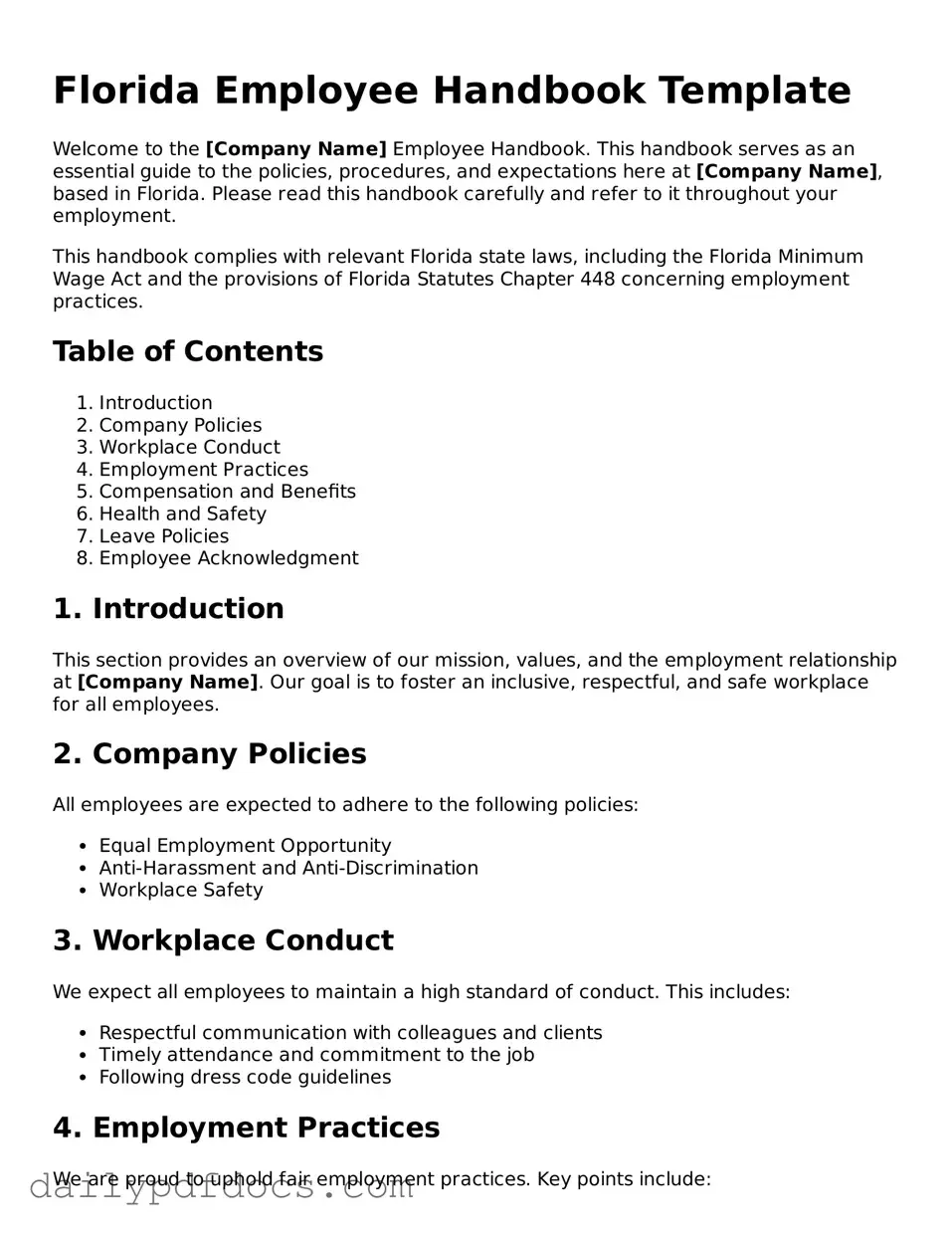What is the Florida Employee Handbook form?
The Florida Employee Handbook form is a crucial document that outlines the policies, procedures, and expectations for employees within a Florida-based organization. It serves as a guide for employees, helping them understand their rights and responsibilities while promoting a positive workplace culture.
Why is an Employee Handbook important?
An Employee Handbook is essential for several reasons. It provides clarity on company policies, ensures compliance with state and federal laws, and helps to prevent misunderstandings. By having a clear set of guidelines, both employees and employers can refer to the handbook for resolution of workplace issues, fostering a more harmonious environment.
Who should receive a copy of the Employee Handbook?
Every employee should receive a copy of the Employee Handbook upon their hiring. This includes full-time, part-time, and temporary employees. It’s vital that all staff members are aware of the policies that govern their employment and workplace behavior.
How often should the Employee Handbook be updated?
It’s recommended to review and update the Employee Handbook at least once a year or whenever significant changes occur in the workplace, such as new laws, policies, or organizational changes. Keeping the handbook current ensures that employees have the most accurate information available.
What should be included in the Employee Handbook?
The Employee Handbook should include key sections such as company mission and values, employment policies, workplace conduct, benefits, disciplinary procedures, and safety guidelines. Additionally, it should cover anti-discrimination policies and procedures for reporting grievances.
How can employees provide feedback on the Employee Handbook?
Employees should feel encouraged to provide feedback on the Employee Handbook. This can be done through direct communication with their supervisor or HR department. Open dialogue about the handbook helps to ensure that it meets the needs of all employees and reflects the company’s values.
Is it necessary to have employees sign an acknowledgment of receipt?
Yes, it is highly advisable to have employees sign an acknowledgment of receipt after they receive the Employee Handbook. This signature serves as proof that the employee has received, read, and understood the policies outlined in the handbook, which can be important for legal purposes.
What should an employee do if they have questions about the handbook?
If an employee has questions about the Employee Handbook, they should reach out to their supervisor or the HR department. It’s important to seek clarification on any policies or procedures that may be unclear to ensure full understanding and compliance.
Can an Employee Handbook be used in legal disputes?
Yes, an Employee Handbook can be a valuable document in legal disputes. It provides evidence of the company’s policies and the expectations set for employees. However, it must be clear and consistent to be effective in such situations.
What happens if an employee violates a policy in the Employee Handbook?
If an employee violates a policy outlined in the Employee Handbook, the company will typically follow its disciplinary procedures. This may involve a verbal warning, written warning, or further disciplinary action depending on the severity of the violation and the company’s policies.
